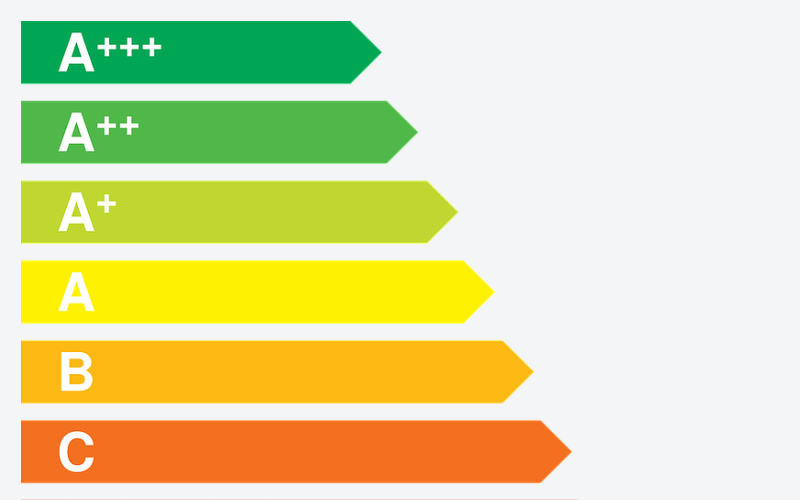Net zero carbon and existing stock: Q&A briefing
With the UK committed to achieving a ‘net zero carbon’ economy by 2050, energy use in homes, particularly existing homes, must be substantially reduced so as not to contribute to Green House Gas (GHG) emissions

This means that the use of fossil fuels for space and water heating, or for cooking, will not be possible. Landlords will need to develop a strategy for improving their stock to comply with ‘net zero carbon’ requirements. This briefing will help start that process.
It essential that any ‘net zero carbon’ strategy should be approved by the senior leadership team and the board or governing body. Chapter 1 of the NHMF Fuel Saving Improvements Guide ‘Developing a fuel saving strategy – agreeing the need’ provides more detail on how to approach this.
However, demand reduction (i.e. improving the energy efficiency of all homes) will be an essential feature of any approach and will require landlords to restructure their business models for housing improvement to integrate what are currently separate programmes (e.g. insulation, windows, boilers/heat pumps, etc.) and integrate other improvements such as new kitchens and bathrooms, in order to ensure a coherent and cost effective approach. Void packages should be reviewed to assess the scope to enhance fabric and ventilation performance in order to drive progress opportunistically.
While the ultimate goal is to be ‘net zero carbon’ by 2050, it is more realistic at present to set stock targets for the stock to be ‘net zero carbon ready’ by 2040 (or earlier) and then to plan how to achieve those targets. An essential element of these plans should be addressing fuel poverty by improving dwellings to the top of EPC band C (SAP 80) by 2030 rather than the lower standards in the Government’s fuel poverty strategy. In relation to moving to low and zero carbon heating, there are currently unknown factors, such as the future carbon content of the grid, its capacity to cope with increased demand, battery technologies and such like that make it much more difficult at this stage for landlords to know which solutions should be adopted. Consequently, demand reduction should be landlords’ immediate aim since it is an essential starting point, whatever low carbon heating options are eventually adopted.
Q. How should landlords approach improving their existing stock for ‘net zero carbon’ by 2050?
A. Landlords need to develop their housing energy strategy as an integral part of their asset management strategy and business plan. This should be led by senior management as part of their strategic planning and will need buy-in from across the organisation – it is not an asset management issue alone although they will be key to its implementation. This strategy should set energy performance targets suitable for each landlord’s stock and ensure there is adequate funding and milestone dates in the business plan. The priority should be to improve dwellings to the top of EPC band C (SAP 80) by 2030, where possible, in order to eliminate fuel poverty (and provide some ‘headroom’ against rising fuel prices) and make better progress towards net zero carbon readiness. In line with PAS 2035 a fabric-focused whole-dwelling approach should be developed that takes account of the energy performance of the current stock and what improvements are practical and cost-effective.
This strategy should have three stages:
- Improving the building fabric (and ventilation) to reduce heat demand (i.e. fabric-focused whole-dwelling approach). In most cases it will be necessary to insulate the whole building envelope: floors, walls, roofs, windows and doors. Where traditionally constructed or protected dwellings cannot be improved to an adequate level, the rest of the landlord’s stock will have to be subject to deeper retrofit, to compensate.
- Improving the building services (heating and hot water) to satisfy residual heat demand efficiently, and remove fossil fuel appliances where practical and cost-effective.
- Improve the performance of dwellings from ‘net zero carbon ready’ from 2040 (or earlier) to net zero carbon status when more is known about the carbon content of the grid, battery technologies, etc. This may involve the addition of local renewable energy systems (solar PV and solar thermal systems) and possibly community wind-power (on or off-site) as well as buffering storage of heat or electricity.
During stages 1 and 2, it will be important to prioritise fuel poor households.
Q. What factors should they consider?
A. To improve their stock to an average of SAP 80 (top of EPC band C), landlords will need to assess the current energy performance of their stock and determine what improvements to the fabric and ventilation are possible. Further detail on the factors to be considered are outlined below. Fabric improvements should not be planned without ensuring that there is adequate ventilation.
Review all existing data, such as stock condition surveys, stock profile (age, built form, type of heating and hot water system), RDSAP ratings, annual fuel costs and CO2 emissions, in housing management systems to assess the stock’s energy and ventilation performance. Identify about 25-30 dwelling types that are representative of the stock, assign each dwelling to a type and select examples that have EPC data, photos, etc for each type so that possible improvement options and costs can be assessed and evaluated before being scaled-up to stock level.
It may be appropriate to pressure test a sample of the stock to determine air permeability of each dwelling type, the scope for improvement and what ventilation approach is appropriate, such as natural or mechanical ventilation. Mechanical ventilation is required if Q50 < 5m3/m2h @ 50Pa and MVHR if Q50 < 3m3/m2h @ 50 Pa. MVHR is integral to the Enerphit standard but this may not be the best retrofit ventilation option for all dwellings, especially small ones. Ventilation improvements should also take account of users, external environment, sources of internal moisture and risks of surface or interstitial condensation, as well as future maintenance.
Establish and cost packages of options that will improve energy and ventilation performance. Scale-up the results of the improvement option evaluation for each archetype to stock level before deducting the costs of measures that are already in the landlord’s investment plan from the estimated overall improvement costs, so as to establish how much additional funding may be required.
Q. What is involved in developing a medium-term plan?
A. Landlords will need to restructure their business models for housing improvement to integrate what are currently separate programmes (e.g. insulation, windows, boilers/heat pumps, etc.) and integrate other improvements such as new kitchens and bathrooms, in order to ensure a coherent approach. It may also be appropriate to enhance void packages in order to drive progress opportunistically, where possible. Whole-dwelling improvement plans for dwelling types (as required by PAS 2035) should identify what improvements and measures are mutually compatible or incompatible. For example, new windows and solid wall insulation should be installed together, internal wall insulation (IWI) should be installed before new kitchen fittings, and roof insulation should be installed when re-roofing, with eaves and verge overhangs if external wall insulation (EWI) is proposed. Dual-coil hot water cylinders should be installed where water heating will be supplemented by solar panels.
Q. What should landlords do when they need to replace gas boilers?
A. While gas boilers will need to be phased out before 2050, no date has been set for when this should happen for existing homes. It may be premature for landlords to remove their gas boilers when they are next due for replacement because work is currently being done to research what zero carbon systems would be most appropriate to replace gas boilers, such as hydrogen-ready boilers (a research project supported by BEIS), as well as heat pumps and communal heating via local, low carbon heat networks. However, landlords should ensure that any planned replacement systems are future-proofed where possible i.e. could be adapted to use a zero carbon heat source.
Q. What standards should be adopted?
A. Landlords should adopt PAS 2035 for all retrofit work and consider adopting the TrustMark QA scheme.
Useful links
NHMF Conference PAS 2035 presentation
Q. Who is required?
A. PAS 2035: 2019 identifies five distinct roles – Retrofit Advisor, Retrofit Assessor, Retrofit Coordinator, Retrofit Designer and Retrofit Evaluator. It is a requirement of PAS 2035 that every domestic retrofit project is overseen by a qualified Retrofit Coordinator. The same person can perform multiple roles if suitably qualified and any conflict of interest is managed. Landlords should always consider using a Retrofit Coordinator and may want to consider training some of their staff for this.
Q. Where can landlords find more information?
A. TrustMark is the organisation delivering the compliance monitoring function rather than the certification bodies in the case of PAS 2035:2019. TrustMark Registered Businesses carrying out work are required to be compliant with its requirements.
The Retrofit Academy CIC is the only Approved Provider of the Open College Network West Midlands Level 5 Diploma in Retrofit Coordination and Risk Management required under BSI PAS 2035 guidance. All domestic retrofit projects should use an Accredited Retrofit Coordinator with a Level 5 Diploma.
The UK Centre for Moisture in Buildings (UKCMB) is an independent, not for profit, public good organisation run by University College London, the Building Research Establishment (BRE), Heriot Watt University and the London School of Hygiene and Tropical Medicine. It works in a rigorous and transparent manner together with partners from academia, government, industry and the public to substantially improve the way moisture risk is understood and managed in the UK. The aim of the UKCMB is the development of a moisture-safe built environment in the UK.
The Energy Saving Trust is a leading and trusted organisation that provides independent and impartial advice to help people save energy. It provides information on how renewable energy can be used in people’s homes.
The Sustainable Energy Association is a member-based industry body offering innovative policy solutions to achieve a low carbon, secure energy future for the UK. It is technology agnostic, taking a whole house and whole heating system approach to identify the right solution. It promotes holistic ‘fabric first’ approaches when developing heat policy and its economic policy analysis could help develop the business case for landlords planning their net zero carbon programmes.
The Active Building Centre’s mission is to revolutionise the way the UK designs, constructs and operates buildings by realising the potential for the integration of innovative renewable energy generation and storage technologies, coupled with state-of-the-art digital design.
Q. How can you keep up to date?
A. Social landlords and their contractors can sign up with the TrustMark notification services to be kept up to date.
NHMF acknowledges contributions to the preparation of this guidance from Dr Peter Rickaby (UK Centre for Moisture in Buildings, UCL) and from Savills. Other organisations that can assist housing providers with stock assessment and net-zero carbon strategies include Parity Projects and Elmhurst Energy.


